Tag: Visual Arts
Call for themes: Chobi Mela VIII
Theme for
Chobi Mela VIII
Win a festival catalogue!
Deadline: 28 February 2014
Propose your theme for Chobi Mela VIII, January 2015
Chobi Mela, the international festival of photography since its inception in 2000 has aimed at exploring the semiotics of present day photographic practice in a broad international context, to bring about an understanding of the medium both within the industry and amongst the public at large. The past festivals, thematically addressed?Differences, Exclusion, Resistance, Boundaries,?Freedom, Dreams and Fragility?provided an opportunity to fine art photographers, conceptual artists and photo journalists, to explore possibilities, in its myriad forms.
Chobi Mela invites you to propose a theme for its upcoming eighth edition. Proposals will then be debated online and followed by a poll. The most voted theme will be chosen for the next festival and will win an exciting copy of the Chobi Mela VIII catalogue.
Deadline: 28 February 2014
Drop your theme and be a part of world?s most inclusive festival!
http://chobimela.org/
Best regards,
Chobi Mela Secretariat
Dhaka, Bangladesh
E-mail:?chobimela@drik.net
DAVID HOCKNEY?S CUBIST PHOTOGRAPHY
Source: Dangerous Minds

?I had become very, very aware of this frozen moment that was very unreal to me. The photographs didn?t really have life in the way a drawing or painting did, and I realized it couldn?t because of what it is. Continue reading “DAVID HOCKNEY?S CUBIST PHOTOGRAPHY”
Old Dhaka by Munem Wasif
Belonging: A book by Munem Wasif
Preface by Christian Caujolle
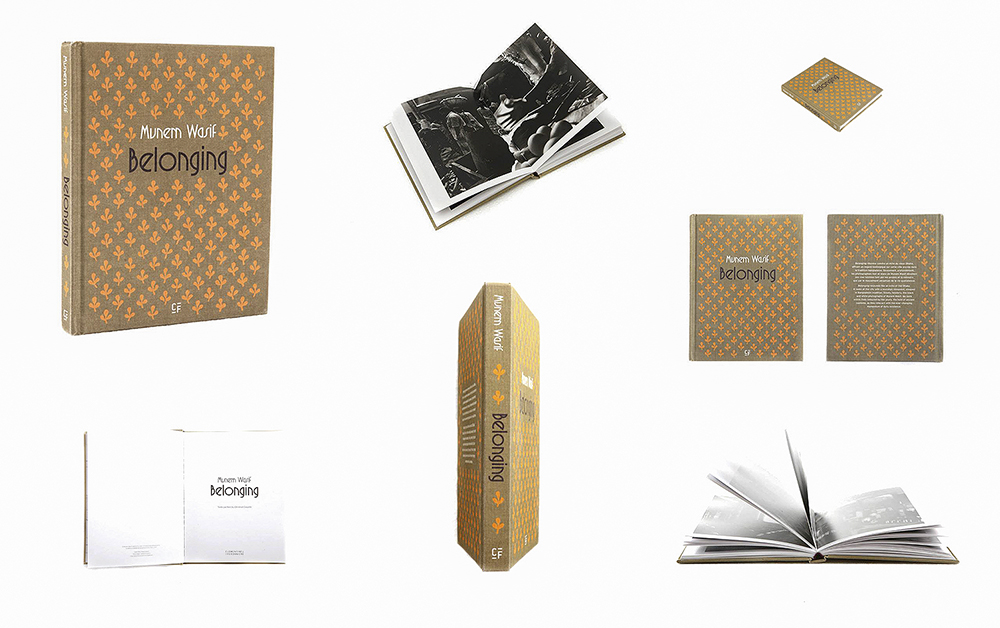
It only takes a single glance to recognize a classic. The confirmation can be seen here, in this direct, forthright photography ? the same quality that came through in the series devoted to ?Salty Tears?, in which Munem Wasif examined, documented and questioned the situation regarding water in his country, Bangladesh. Classic by choice, starting with the choice of black and white, whose relative distancing from reality demands exacting precision in the composition. Arising, as always in photography, from a succession of rejections, eliminations and decisions, this choice precludes the picturesque quality that too often prevails when lands and peoples are viewed through the prism of exoticism. But black and white, while it places the photographer within a documentary tradition long associated with journalism, obliges him to go beyond merely transposing a visual record of the world. He must take a position, and he does, deliberately and consistently.
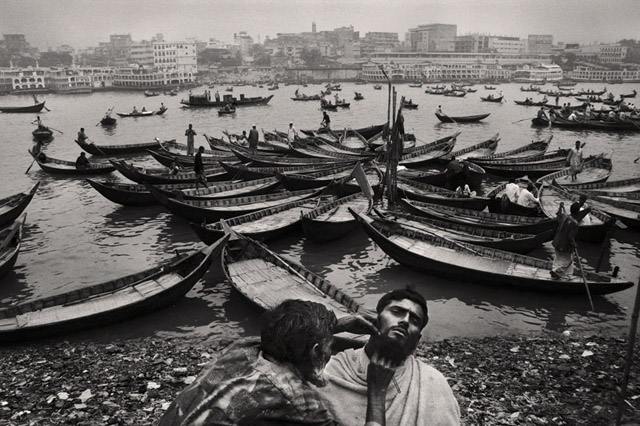
Continue reading “Old Dhaka by Munem Wasif”
2D Or Not 2D
My research for the curatorial presentation at the Angkor Wat festival led me to many interesting bodies of work. I had help from several areas. The photographers themselves, particularly Pedro Meyer, Frad Baldwin and Wendy Watriss of Fotofest, were many amongst them. Francoise Callier??helped by giving me unfettered freedom in choice and format. It was hard work, but I was enjoying it. As always, there was work I couldn’t include into a 90 minute presentation. I decided to continue the work. Here is some of the work that didn’t make it to the show. Not because the work wasn’t good enough, but because it didn’t quite fit. Enjoy:
Models? Faces Turned Into Stunning Optical Illusions By Creative Russian Duo

Their newest series of stunning colored portraits,?2D Or Not 2D, is only the latest collaboration between the two artists. Khokhlov and Kutsan have also created portrait series with powerful black-and-white designs and a series parodying the popular Angry Birds game. The designs are amazing ? some of them soften or break down the face?s lines, while others reinforce them or create unnaturally perfect patterns. Continue reading “2D Or Not 2D”
Photography made easy
The first of a set of video clips giving basic tips on photography. It is part of a photo contest with exciting awards:
This is meant to be a fun series. Do share:
Reflections on Chobi Mela VII
?By Alakananda Nag
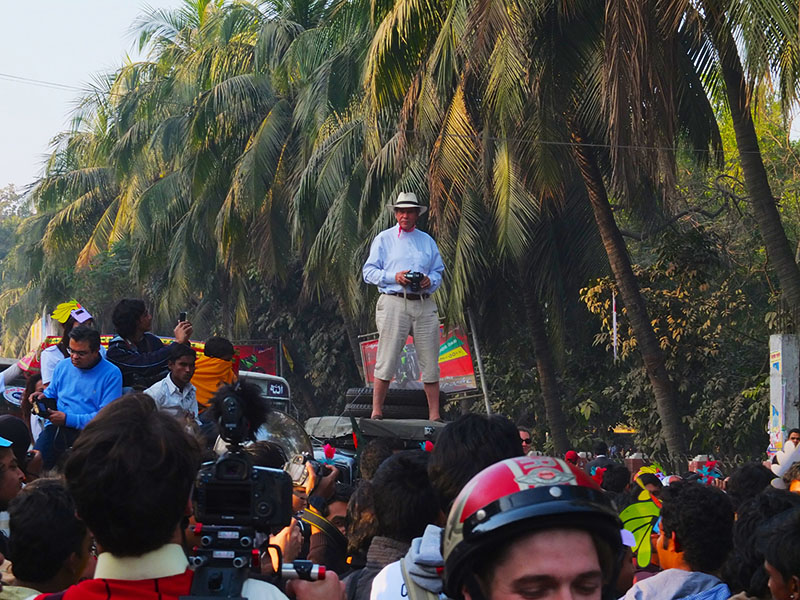
Chobi Mela, a biennale photography festival held in Dhaka, Bangladesh just completed its 7th edition in January 2013. Chobi Mela (literally, photo fair), started in 1999, is Asia?s largest photo festival. This year the theme was Fragility. Continue reading “Reflections on Chobi Mela VII”
Architecture for Green Living
Fifth book in the series on Bangladeshi Fine Art
Rafiq Azam
Earlier books have been by Shahidul Alam, Kazi Ghiyasuddin, Safiuddin?Ahmed and Zainul Abedin.

After the last star has gone
They were professionals I respected and admired, but they had found my comments disparaging. ?What about the work we?ve been doing all these years?? they had hurtfully said. I had reflected upon the fact that while there were some great photographers in India, it didn?t really have a photographic movement. Until now.
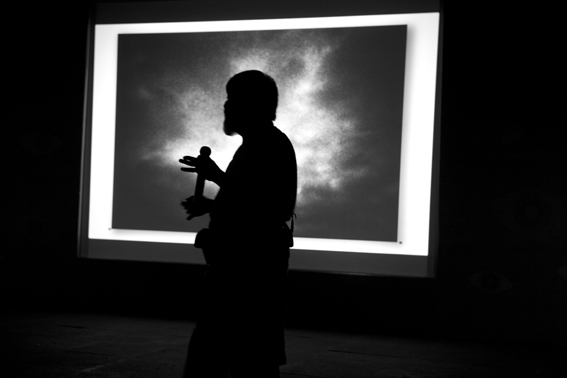
Whenever I passed through Delhi, Raghu, Pablo, Dayanita, Prashant and other photographer friends would all meet at the India International Centre and try and kick start this movement. ?Karne hoga yaar? (we?ve got to do it mates) was the rallying cry we would leave each other with, but while several initiatives had been taken, it was the Delhi Festival, launched in October 2011, that showed the first signs of that collective endeavor.
It was the 18th December 1998. The day Pathshala was launched. Indian photographer Saibal Das had taken me aside to quietly ask, ?is this the ?real? Reza?? I had nodded and he went on ?can I touch him?? Reza Deghati, the famous National Geographic photographer, chuckled when I explained. We all paused as Saibal approached – and touched – his idol.
It took me back to 1991, when Fred and Wendy Baldwin had walked me through the exhibition spaces in Houston. I had never been to Fotofest or any other festival, but listening to Fred and Wendy, I could see myself surrounded by images and image-makers.
Arles was my first festival. Mexican photographer Pedro Meyer and I had known each other for many years, but we had never met. I barely survived the crushing hug at our first encounter. The joy of seeing outstanding work all across the city. Stunning multimedia displays on the giant Amphitheatre. The excitement of walking amidst household names in photography, seeing, sometimes touching, my heroes, made me realise this was a feeling that had to be shared. I wish I could have taken a suitcase full of photographers with me to these festivals. I settled for two. In a subsequent trip to Arles, we stopped on the way in Paris and Abbas, the chairman of Magnum, took my two young colleagues Shehzad and Mahmud on a guided tour of the agency. I recognized that glazed look in their eyes.
Meeting Raghu Rai on a boat from Hong Kong to Kowloon. Lunch at Chelsea with Raghubir Singh, Sunil Janah and Ram Rahman, courtesy of Max Kozloff. Working with Dayanita Singh, Eugene Richards and Mark Abraham in my first curatorial assignment, have been seminal moments in my own photographic career. I remembered the high I got from each of those encounters. This was a high that needed to be shared. I needed a very large suitcase. If the photographers couldn?t be taken to the festivals, the festivals would have to come to them. So Chobi Mela was born. That was 1999.
Little had we realized what an electrifying effect this festival would have. Photographers who came over, went back energized and set up their own festivals. Besides the Chinese mega events, small intimate festivals took place in Singapore, Malaysia, Cambodia and Thailand. India however, was still lagging behind. That was when Prashant Panjiar and Dinesh Khanna stepped in. They weren?t foolhardy youngsters, and a great deal of thinking and planning went into staging this important event.
When asked why Delhi Fest became such an instant success, Prashant would in his typical manner respond ?it was because Dinesh and I are not superstars?. ?While I certainly dispute his non-superstar status, I know what he was getting at.? Prashant and Dinesh were going to make the festival a success and not let their egos get in the way.? As brave people do, the duo had some luck on their side. It was ambitious to take on such a diverse programme on their first attempt. The choice of the magnificent grounds of the Habitat Centre, was key to making it work. I am sure a lot went on behind the scenes to make it happen. The Amphitheatre, the classrooms, the open air space and the splendid location were central to creating the atmosphere of the special event
Fine shows, interesting talks, the organic mix of the experienced and the new, combined with ambitious curatorial projects, made it seem it was a festival run by old hands.? I am sure there were cracks, as there always are, but whatever might have gone on behind the scenes, the show on stage went without a blip.
For me, it was the camaraderie between the photographers wafting throughout the festival that made it particularly special. My lasting memory – of the inevitable photo op -with Raghu Rai, Pablo Bartholomew, Prashant Panjiar, Prabudhdha Das Gupta and I, will forever linger. Prabudhdha is no more, but what these fine photographers have together built, will I am sure, outlast them all.
Shahidul Alam
Dhaka
September 2013
Live Between Buildings: Narrow Micro-Homes Fill City Gaps
By Urbanist
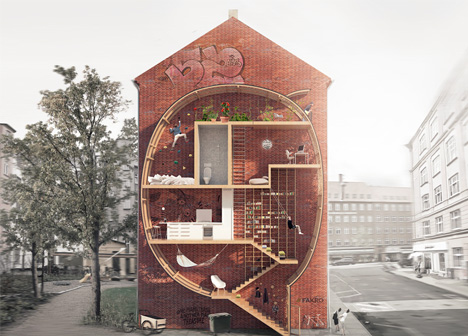
Playful yet thought-provoking, this project asks: what do we do with small leftover spaces in cities ? particularly in urban areas where even a few square feet of real estate can cost a fortune? Continue reading “Live Between Buildings: Narrow Micro-Homes Fill City Gaps”

